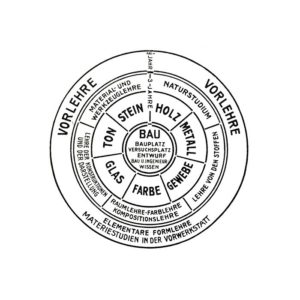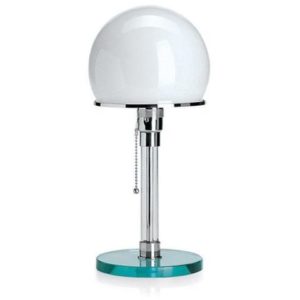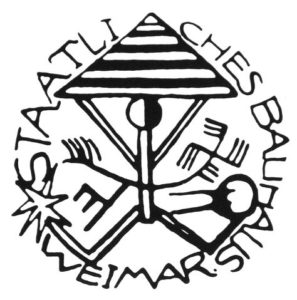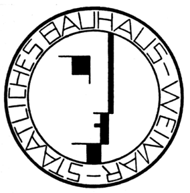Modern Art: Transformation of the Bauhaus: From Medieval to Modern
The Early Bauhaus
When founding the Bauhaus in 1919, Walter Gropius strongly associated it with the Middle Ages. His original ambition was to create a new school of artists working together with craftsman on interdisciplinary workshop projects. The horror of WW1 was important for the original founding of the Bauhaus. The machine, which was once previously celebrated as being a vibrant symbol of modernism and the future, was now rather looked at as the ‘machine of war’ and a tool of devastation. Influenced by this outlook, Gropius felt one should no longer suspend their faith in the machine, and thus he returned to the medieval idea of craft. After the turmoil of war, there was popular unease of modern life. This notion formed the original building block of the Bauhaus ideology. Gropius set out to create a new world based on craft and artistic collaboration. The idea of an idealised enterprise of the medieval craftsman directly linked Gropius to the original founders of the Arts and Crafts Movement; William Morris and John Ruskin.
Gropius himself was a trained architect and as a member of the Bauhaus, he took on an important leadership role. He ultimately believed in Gesamtkunstwerk – the total work of art, but with the individuality of artists themselves. He attempted to collapse the hierarchies between fine arts and applied arts and consequently merged them together through his curriculum, which was a defining factor in the Bauhaus school. His curriculum consisted of an outer rim, which meant students would learn a base about everything before specialising in a specific workshop. This innovative curriculum ensured that students would get a sense of the internal and intrinsic properties of materials before choosing their speciality. Through this programme, every student would possess the same basic training. Subsequently, students would join particular workshops with formal Masters of Arts and were additionally connected with a Craft Master who new the efficiency and qualities of the materials handled. After this craft training, the apprentices selected a workshop in which to become a specialised expert in.

The Modern Bauhaus
In 1922, Gropius began to orient the school more towards machines and rationalism for the modernist market. As the country and currency began to stabilise, in turn, the Bauhaus became more modern. Moreover, a new slogan emerged: ‘art, technology and new unity’.
Through this motto, Gropius sought to bring together these three aspects of art to design for a new future. The objects coming out of the workshops such as Wilhelm Wagenfeld’s Glass and Metal Lamps, 1924, began to celebrate modernisms materials of metal and glass. At this pinnacle moment within the Bauhaus career, the emphasis was deliberately shifting away from purer crafts towards the machine of modernism.

The transformation of the Bauhaus from Medieval to Modern can be most lucidly seen when contrasting the change in logo from 1919 and 1922. Expressionistic and mystical objects embodied the early Bauhaus logo. The 1922 design was made to fit the new modernist outlook of the school. It was characterised by rationality and geometry.


With the rebirth of the Bauhaus, came the aim for art and technology to be made together. There was now an approach for rationality and forms. The workshops were no called ‘laboratories’. Being sponsored by the government of Weimar, the Bauhaus sort to make contact with the factories and produce objects in this way. With the ambition of becoming a productive entity, they put on an exhibition called Haus am Horn, in order to present the ‘fruits’ of the school. The exhibition itself was a simple prototype house which promoted all the hallmarks of modern architecture; flat roof, simplified flat façade and lack of ornamentation. The small modest house showcased The Bauhaus’ new essence for modernism. Additionally, within these years, Maholy Nagy was hired and accordingly transformed the formerly craft-based foundation course to modern with its new sense of rational use of technologies and media. For example, instead of using the pure material of silver, he introduced steel.
The Weimer government were the first government to hitch to the rise of the Nazis and the Bauhaus lost their funding overnight. They moved to the city of Dessau, designing a new school with rapid speed. It was at this point that protagonists of the modernist movement started emerging out of the Bauhaus. This includes famous names such as Oskar Schlemmer, El Lissitzsky and Paul Klee. Many of these characters were so influential that they eventually occupied their own Master House’s within the Dessau School Estate.
Thereafter, the Bauhaus continued to embody all the fundamentals of modernism, thus ultimately birthing their modernist legacy.
